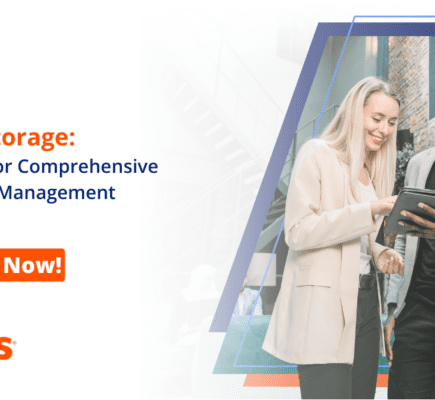
Mergers and acquisitions (M&As) offer organizations the opportunity to scale operations, diversify product lines, and capture new markets. However, they come with their own set of challenges, such as the nuances of integrating legacy IT systems, complying with stringent regulations, and maintaining business continuity.
During a recent webinar, copious insights were shared on successfully managing mergers and acquisition processes (M&A), integrating legacy IT systems, and learning from past experiences to bolster future acquisitions. The panel consisted of Access’s top management: Ted Kenney, Chief Information Officer; Todd Cawthron, Senior VP of Software Operations; and Carole Baker, VP of IT Mergers and Acquisitions; moderated by Mike Discenzo. Together, they have managed over 190 mergers and acquisitions for Access.
Five Lessons on Navigating IT Integrations After a Merger or Acquisition
Here, we distill five key takeaways from the event to help you navigate the labyrinth of post-M&A IT integration:
1. The Need for Heightened InfoSec Strategy and Regulatory Compliance
Access’ Chief Information Officer, Ted Kenney, emphasized the rising importance of information security (infosec) due diligence in the M&A arena. “We do infosec due diligence upfront. Carole works very closely with our infrastructure team, information security team, project management office, and others depending on the type of acquisition it is,” Ted explained and continued to provide a specific example. During the integration of a recently acquired company that dealt with government data, Access had to adhere to very specific frameworks. It was imperative to collaborate with the right partners and understand the essence of each regulation to ensure total compliance.
Amid increasing regulatory complexities and the ever-growing cyberspace threats, developing a robust infosec strategy is imperative. This is a vital aspect for every organization planning M&A activities to bear in mind. By ensuring you give due attention to infosec, your organization can protect itself against potential vulnerabilities, avoid regulatory non-compliance, and ultimately, protect your brand’s reputation.
2. Acquiring Digital Systems vs. Hard Copy Records Management Systems
The panelists observed that while acquiring physical inventory and network security has mature repositories of procedures, the dynamics of purchasing digital assets are still variable. With relentless technological advancements and a digital product side that is less experienced, it is vital to adapt quickly and continuously update your operating procedures. The antidote to this challenge, as expressed by the speakers, involves asking better questions, reducing unknowns, and continuously adapting to evolving technology.
3. Best Practices for Navigating M&A Time Limitations
In some industries, signing and closing on the acquisition can occur within the same day. This accelerated timeline can limit opportunities for thorough due diligence, creating potential risks in post-acquisition integration. Businesses must be nimble, flexible, and ready to hit the ground running. Rapid response teams, trained to quickly spot and address potential issues, are crucial in managing problems after the acquisition has been signed.

Beyond Storage – A Comprehensive Information Management Checklist
Organizations of all kinds and sizes are finding themselves faced with an array of information management challenges. Some of these challenges, like the transformation of information technologies and the growth of data sets, have remained relatively unchanged for years.
4. Dealing with Complex IT Integration Scenarios
Access experienced a particularly challenging issue during a recent software integration. The process involved the integration of a mix of homegrown systems, off-the-shelf software, and customization, highlighting the complexities of dealing with physical and digital records management. The task was to split apart digital and physical aspects and reunite them in an integrated, curated system.
The takeaway here is that divesting assets across multiple locations and managing composite physical and digital records can complicate the integration process. The remedy lies in proactive anticipation of these complexities and meticulously planning the transition to ensure a smooth fusion.
5. Ensuring a Smooth Transition for Acquired Companies
When integrating an acquired company, it’s crucial to focus on maintaining continuity and minimizing disruption to operations. Recognizing these needs, Access has a dedicated team in place to migrate new acquisitions to their common platform, Access Unify, ensuring all customers have a modern architecture and a positive customer experience.
Firmly at the heart of this process are key performance indicators (KPIs) such as customer retention, onboarding efficiency, operational efficiencies, and customer health. Leveraging the power of data analytics and dashboards to keep these indicators in check can tip the scales of success in your favor.
Conclusion
The overall takeaway from the webinar could best be summarized in three powerful words: challenge, learn, and improve. Access’s approach to continuous improvement and stringencies in information security and regulatory compliance is a model for businesses navigating the stormy seas of M&A. However, Access’ experiences also throw light upon a particularly important point: M&As aren’t just about negotiations and deals; successful integration is the real game-changer. With the right systems, procedures, and outlook in place, businesses can use M&As as a lever for their growth, overcoming integration challenges and driving towards a future of boundless possibilities.
For additional insights from Carole, Ted, and Todd, watch the recording of Successful Mergers & Acquisitions: Expert Advice for Integrating Legacy IT Systems.




